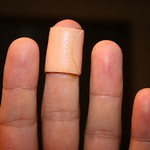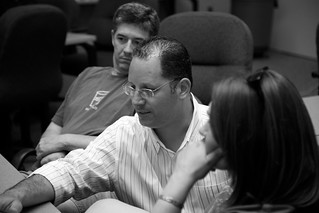The short answer is: It depends?

The Council of Ministers of Education Canada started publishing Assessment Matters! in 2013. These are a series of short summaries of specific educational issues that emerge from four different national or international assessment tests:
The value of homework for learning is a much debated issue. (See Rethinking Homework by Alfie Kohn and The Case For and Against Homework by Robert J. Marzano and Debra J. Pickering.) Recently, Assessment Matters! published a summary of findings from PCAP, PISA, and PIRLS(pdf) that summarizes what we've learned about how much homework is enough. This is what they learned:
Grade 4 Reading - PIRLS
It turns out that spending more than 15 minutes a day doing "reading homework" negatively impacts reading achievement for students in grade 4. The blue bars in the graph below show what proportion of students typically do reading homework for various lengths of time. The broken line graph shows the same students reading achievement scores. The report quotes Canadian teachers: "more does not necessarily mean better."
Grade 8 Math - PCAP
Students who don't do any math homework have the poorest results on the PCAP test. After about 30 minutes of homework per week, students experience diminishing gains in terms of their results on the PCAP test.
Numeracy Note 1: Look closely at this graph. The scale goes from 440 to 540. The differences between the bars would appear much smaller if the graph started from 0 on the left and went to 540 on the right. This suggests that while there may be some gains to be had from homework in the middle years those gains may be rather smaller than implied visually by this graph. The same is true for the graph above (it goes from 520 to 570 rather than 0 to 570).
15 year olds & Math - PISA
Again, like grade 8 students on the PCAP test, 15 year olds who do no homework have the poorest achievement scores on the PISA test. And similarly, after about an hour a day homework offers diminishing returns on student achievement scores. With that said these results echo much of the research results on homework: modest gains for older students.
Numeracy Note 2: This graph shares the same issues with the scale represented (it displays values from 470 to 550 rather than 0 to 550) as those above. The left hand scale is measuring PISA test scores. The percentage scale on the right goes from 0 to 70; it measures the percentage of students who do different amounts of homework each day. The scales measure different things. Had the right hand scale started from 0, the right hand percentage scale, also starting from 0, would leave a rather different visual impression on the reader.
This graphs shows the same information using a common scale:
This is the same information again with different relative scales (600 max test score and 100 max percentage) both starting from 0:
These last three graphs represent the same information. They have quite different visual impacts. Go back and take another look at the first graph above; notice anything?
Further Reading
There are many nuances that go into determining the effectiveness of homework. "Having Homework" as opposed to well designed purposeful practice that students can reasonably accomplish independently aren't necessarily the same thing. The Canadian Council on Learning, having done a systematic review of the research on homework concludes: Homework helps, but not always.(pdf)
See also: Homework: What the Research Says(pdf) by Harris Cooper and Rethinking Homework(pdf) by Cathy Vatterott.
How much homework did your teachers assign when you were in school? How much of that homework did you do? How much homework do you typically assign to your students? How much of it do they typically do? How do you think homework best supports student learning?
photo credit: creative commons licensed (BY-NC-ND) flickr photo by MarkGuitarPhoto

The Council of Ministers of Education Canada started publishing Assessment Matters! in 2013. These are a series of short summaries of specific educational issues that emerge from four different national or international assessment tests:
• The Pan-Canadian Assessment Program (PCAP)
• The Programme for International Student Assessment (PISA)
• The Progress in International Reading Literacy Study (PIRLS)
• The Trends in International Mathematics and Science Study (TIMSS)
Grade 4 Reading - PIRLS
It turns out that spending more than 15 minutes a day doing "reading homework" negatively impacts reading achievement for students in grade 4. The blue bars in the graph below show what proportion of students typically do reading homework for various lengths of time. The broken line graph shows the same students reading achievement scores. The report quotes Canadian teachers: "more does not necessarily mean better."
Grade 8 Math - PCAP
Students who don't do any math homework have the poorest results on the PCAP test. After about 30 minutes of homework per week, students experience diminishing gains in terms of their results on the PCAP test.
Numeracy Note 1: Look closely at this graph. The scale goes from 440 to 540. The differences between the bars would appear much smaller if the graph started from 0 on the left and went to 540 on the right. This suggests that while there may be some gains to be had from homework in the middle years those gains may be rather smaller than implied visually by this graph. The same is true for the graph above (it goes from 520 to 570 rather than 0 to 570).
15 year olds & Math - PISA
Again, like grade 8 students on the PCAP test, 15 year olds who do no homework have the poorest achievement scores on the PISA test. And similarly, after about an hour a day homework offers diminishing returns on student achievement scores. With that said these results echo much of the research results on homework: modest gains for older students.
Numeracy Note 2: This graph shares the same issues with the scale represented (it displays values from 470 to 550 rather than 0 to 550) as those above. The left hand scale is measuring PISA test scores. The percentage scale on the right goes from 0 to 70; it measures the percentage of students who do different amounts of homework each day. The scales measure different things. Had the right hand scale started from 0, the right hand percentage scale, also starting from 0, would leave a rather different visual impression on the reader.
This graphs shows the same information using a common scale:
This is the same information again with different relative scales (600 max test score and 100 max percentage) both starting from 0:
These last three graphs represent the same information. They have quite different visual impacts. Go back and take another look at the first graph above; notice anything?
Further Reading
There are many nuances that go into determining the effectiveness of homework. "Having Homework" as opposed to well designed purposeful practice that students can reasonably accomplish independently aren't necessarily the same thing. The Canadian Council on Learning, having done a systematic review of the research on homework concludes: Homework helps, but not always.(pdf)
See also: Homework: What the Research Says(pdf) by Harris Cooper and Rethinking Homework(pdf) by Cathy Vatterott.
Further results from the tests mentioned above are available online:
photo credit: creative commons licensed (BY-NC-ND) flickr photo by MarkGuitarPhoto
- 11/17/2014 08:00:00 am
- 1 Comments


















